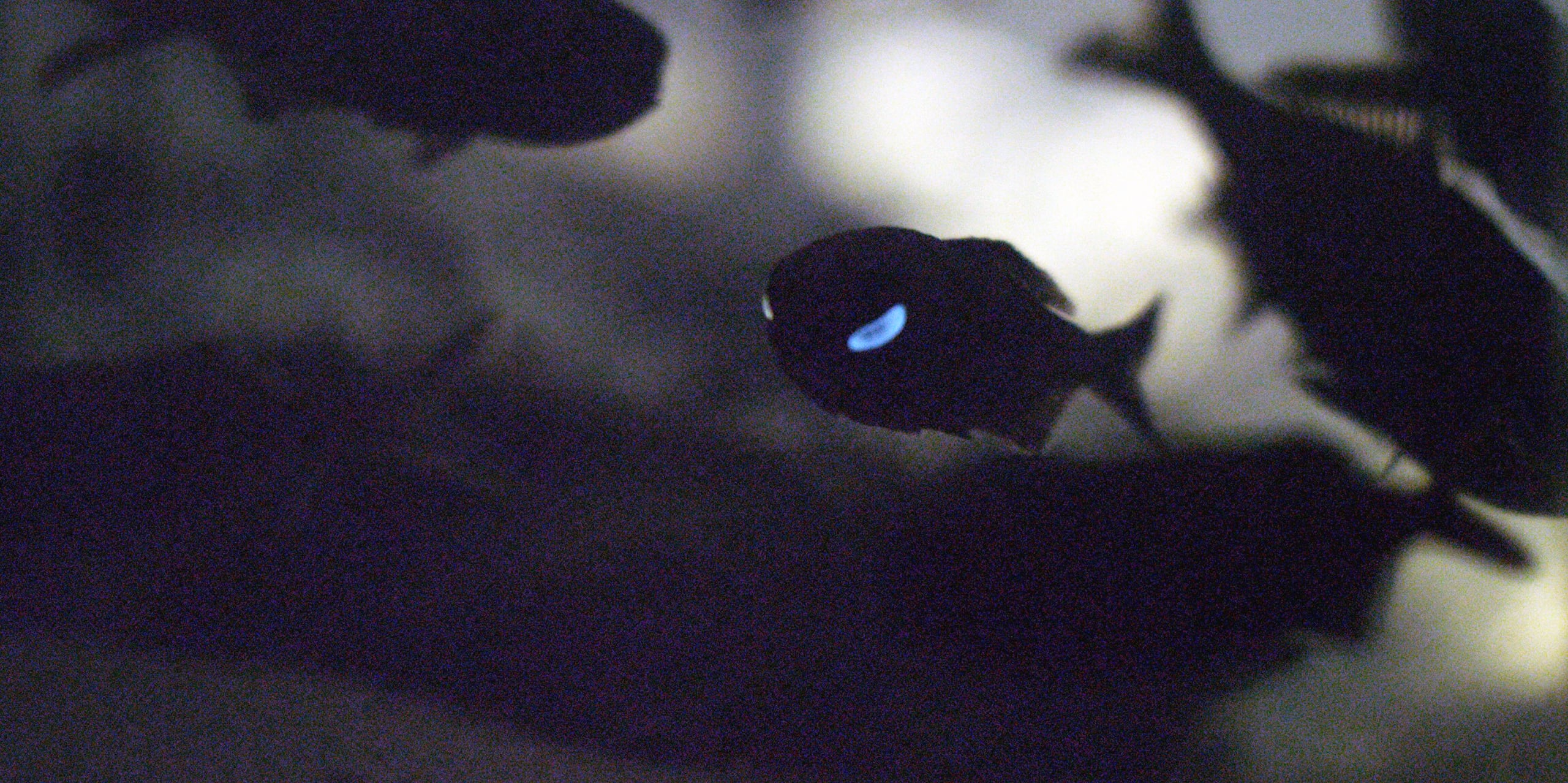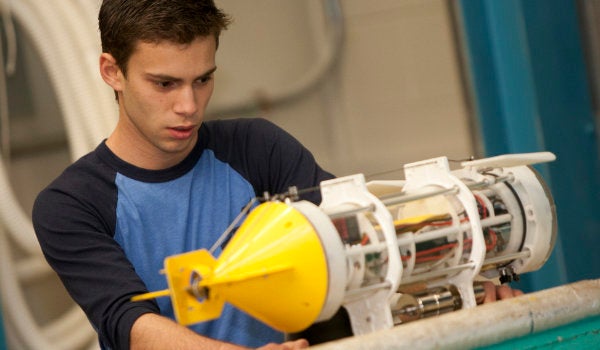
A little fish is making big news for its ability to school in the absence of natural light.
Flashlight fish caught on camera by Brennan Phillips, an assistant professor of ocean engineering at the Graduate School of Oceanography and co-author of a study involving URI, the American Museum of Natural History, and several other North American universities, raise the possibility that fish schooling may occur in the deep sea, where it was assumed to be too dark for fish to coordinate movements with one another.
For Phillips, to see flashlight fish schooling was an unparalleled sight. In the depths of the sea off the South Pacific’s Solomon Islands, Phillips and a team of researchers saw what he described as “a magic carpet of stars.” These “stars” were actually bioluminescent lights emitted from thousands of flashlight fish (Anomalops katoptron). Bioluminescence is visible light generated by living things through a chemical reaction. Flashlight fish, which typically hide in reef crevasses and caves by day and only venture out on moonless nights, have pockets under their eyes that are filled with bioluminescent bacteria manipulated by an organ that allows them to “flash” with different patterns.
To capture footage of the fishes’ nighttime behavior in their natural environment,
observations had to be made without artificial light. Scuba divers and a three-person submarine used a suite of low-light cameras, including a custom-built underwater high-speed, high-resolution scientific complementary metal-oxide-semiconductor camera.
“Everything had to come together to get these data—the new camera system, the weather, the divers, and, of course, the fish,” Phillips said. “It was one of the hardest challenges I have faced as a marine roboticist.”
Researchers collected footage of the Solomon Islands school—the largest recorded aggregation of bioluminescent flashlight fish, composed of thousands of individuals—as part of a 2013 trip, and returned to the remote, uninhabited volcanic island in 2016 and 2019 to gather more data.
Through a combined analysis of field video recordings and modeling, the researchers demonstrate that the flashlight fish are indeed schooling—synchronizing their behavior and swimming in an oriented, polarized manner relative to one another—and not just “shoaling,” a term that describes a loosely organized group of fish. “Our finding reveals a completely novel function for bioluminescence in the ocean, and shows that fishes are able to school using only the natural light they emit, without the need to rely on ambient light,” said John Sparks, a curator in the Museum’s Department of Ichthyology.
‘A novel function for bioluminescence’
It is estimated that more than 25 percent of the world’s fish species school, a collective behavior that is thought to lower the risk of predation, as well as give the fish greater access to food and mates. But schooling fishes rely on their ability to see one another, an idea that is supported by observations of fish schools dispersing at depths with critically low light levels. So when the team of researchers—including Sparks came across schooling flashlight fish in the dark, it was quite the surprise.
“It was simply astonishing—we observed thousands of flashlight fish using synchronized bioluminescent flashes to coordinate their movement and facilitate schooling behavior in complete darkness, a behavior and function that had not previously been reported for bioluminescence,” said Sparks, who is the senior author on the paper.
“Fish use light to communicate. This is something we’ve known, but to be able to show that quantitatively, and to share supporting video footage that we were able to get, is remarkable,” said Phillips.

